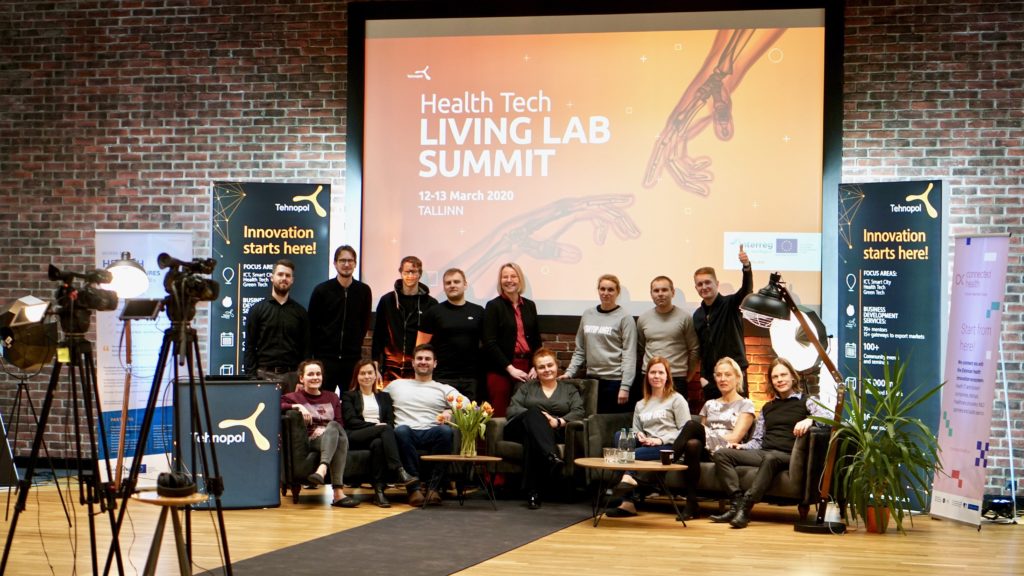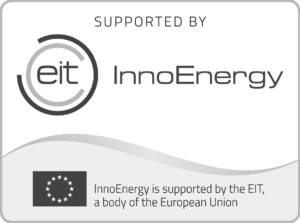31.03.2020
Digital health solutions help better prepare us for the unexpected

Health tech experts and enthusiasts gathered in Tallinn on 13 March for the Health Tech Living Lab Summit to discuss the challenges of creating innovative solutions in healthcare. However, the first challenge arrived sooner than expected – the government of Estonia declared an emergency situation the night before the event was set to start and the conference was transformed into a webinar in a matter of hours.
According to Piret Hirv, Head of the Connected Health Cluster led by science and business campus Tehnopol, the healthcare sector develops many good ideas to improve people’s health or facilitate their lives. The panel discussion looked for ways to implement innovation while preserving resources and making wise use of them.
“Innovative solutions make patients’ lives easier and the treatment process safer and faster for nurses and doctors,” said Hirv. “This makes the swift implementation of such solutions important. Various partnership mechanisms, tools provided by funders and a collaborative culture help improve the situation. Support for cooperation needs to come from a political level as well as a practical viewpoint with regard to users.”
Esther Davidsen, who works as a policy advisor to the EU and is a project manager in the Sjælland region, spoke about how small countries have a significant advantage and provided examples of success stories from Denmark. Davidsen explained how every region in Denmark hosts their own pilot projects which are then implemented on a wider scale. “Processes are time-consuming,” she said, “but we are moving towards an e-hospital, towards giving patients the opportunity to self-monitor from home to keep them from being hospitalised in as many numbers and to make sure they can get treatment close to home.”
According to Davidsen, difficulties arise due to the structure and objectives of different systems. “At present,” she said, “hospitals receive payment based on the number of patients, whereas local authorities function based on structure and budgets. Placing the patient in the middle of all this and refocusing all systems on the interests of the patient is a challenge.”
Ahmed El Saeed, programme lead at the United Nations Technology Innovation Lab in Finland, located in Aalto University in Helsinki, described how the Finnish healthcare ecosystem is very rich and full of innovation and how companies and universities are keen to cooperate. “We are trying to build a model of cooperation,” he explained, “that can be implemented gradually and is also suitable for companies. We use open-data concepts which are also challenging since the UN cannot support business models which are restricted to specific digital solutions.”
Innovation: more costs or more savings?
The panel discussion also addressed how innovation is seen as expenditure or income. El Saeed admitted that innovation brings in money by improving the efficiency of the healthcare system. “Different models have shown that the stress put on healthcare systems is smaller when people are more aware of digital solutions,” he said.
Terje Peetso from the North Estonia Medical Centre was not quite on board with this. “It is nice to say that innovation helps cut healthcare costs but it is actually not so simple,” she highlighted. “First, we need to invest and then we can look for a return on that investment – indirect unmeasurable savings and direct savings. It might take five years to see savings, making this a trick question for healthcare providers.”
“There are things we must invest into, such as digital health data,” she added. “It is also good idea to invest in national digital prescriptions as this leads to significant indirect savings, for example, by preventing mistakes. At the same time, there are solutions that help save doctors’ time, for example, by using telehealth opportunities. But remote monitoring requires prior investments into the necessary equipment.”
Peetso also talked of some of the success stories of North Estonia Medical Centre, e.g. a solution used in intensive care units designed to seamlessly integrate nursing-related instructions and procedural arrangements into the work flow. Even experienced nurses skip some steps in the work flow and beginner nurses find support extremely important. A tool was created in association with the Connected Health Cluster to support nurses in performing day-to-day procedures, thereby improving the quality of their work and reducing variability and any issues arising therefrom.
“It’s a great tool to learn and recall procedures,” said Peetso. “Sure, we have to take into account that there are maintenance costs and that instructions need to be updated, but we have seen good results in intensive care units.”
“We are currently working on the journey of stroke patients, which will hopefully also prove successful,” assured Peetso. “We are also looking for similar solutions for cancer patients. A patient-focused and patient-oriented approach is the most important thing when generating innovation.”
Innovation that supports health without harming patients
Aki Gröhn, CEO of Kuopio Health confirmed that the patient’s health comes first when it comes to innovation. As does anonymity, knowing that data cannot be linked to specific patients. According to Gröhn, this should be taken into account when launching new products.
Terje Peetso added that it needs to be thoroughly explained to people why new solutions matter, how they work and how data protection and cybersecurity fit into the picture. “The alternative solution should be accessible as well, not just the digital,” said Peetso. “People usually agree to the digital solution but they must have the opportunity to see their doctor face to face if they really want to.”
Drawing on her experience with ProVaHealth, Davidsen spoke about how medical systems can be used to test partially finalised products. “This results in the chicken or the egg conundrum,” she explained. “On the one hand, we need a finished product, but on the other hand, the input and participation of medical experts is essential in the beginning stages of a collaborative process to ensure success.”
Innovation supports preparedness
At the end of the discussion, moderator Marjo Näkki (Finnish national public broadcasting) asked the participants to bring out one wish to improve the development of innovation.
Terje Peetso wished for people to have better knowledge of their personal health. “I’m not sure to whom I should address this wish,” she said, “because it involves many parties – the patient as well as healthcare providers. A patient-focused system is possible only if people have health-related skills. We will not be able to achieve this if we continue with passive patients. Public health-related skills have never been measured in Estonia, but we should measure them to ensure we are better prepared for new solutions.”
Aki Gröhn and Esther Davidsen emphasised the need for open dialogue to make sure all parties know what needs doing and by what rules; they also stressed the importance of interacting with users and asking their take on things.
Ahmed El Saeed acknowledged that the current situation requires us to consider how innovation can help better prepare us for global emergencies. “Now is the time to invest in future solutions and prevent emergencies from happening again,” said El Saeed.
“These complicated times really highlight the need for novel solutions in healthcare,” said Piret Hirv to summarise her position. “This gives us an opportunity to find the right tools for swift solutions, but I wish it would take place even faster and for us to be able to move from words to actions.”
Watch the webinar from:
https://www.facebook.com/tehnopol/videos/232361688155438/
Health Tech Living Lab Summit was organised by Tehnopol science and business campus with the support of the European Regional Development Fund.
Tehnopol is the largest science and business campus in the Baltic Sea region and aims to facilitate the generation and growth of world-class tech companies in Estonia and support their expansion to foreign markets by providing solutions ranging from business properties to business development services. One of the focus areas of Tehnopol science and business campus is health tech. The Connected Health Cluster, which was created to support this area, unites everyone in the health sector in one ecosystem. The cluster’s activities generate value for healthcare providers, health tech companies as well as other stakeholders related to the area. The cluster helps organise local collaboration projects and export health tech solutions to other countries.
The cluster’s activities are co-financed by Enterprise Estonia.












